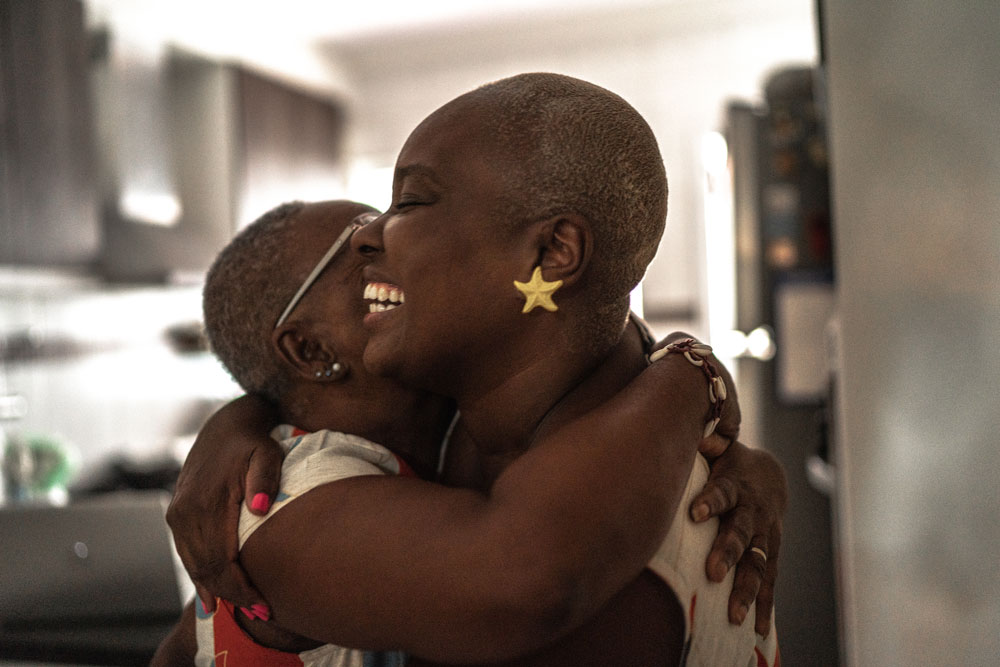Highlights from ASCO: Our experts weigh in
The ASCO Annual Meeting gathers oncology professionals from around the world to discuss the latest in cancer research and treatment. This year’s five-day event included more than 2,500 abstract presentations — and while each study is valuable, we want to share comments on a few topics of particular interest.
Health equity in oncology
The theme of ASCO 2021 was “Equity: Every Patient. Every Day. Everywhere.” In sessions like this one, experts discussed ways to ensure broader access to care so all patients can benefit from the latest advances. Attendees also had access to ASCO Voices, a series of short videos from oncology professionals who shared personal stories about diversity, equity, and inclusion.
We heard about many issues of equity during plenary and abstract sessions. In too many studies, minority racial groups were underrepresented in trial populations. This aligns with a 2021 article in ASCO’s Journal of Clinical Oncology, which found an underrepresentation of minority racial groups and an overrepresentation of white patients in precision oncology trials. In its conclusions, the Journal of Clinical Oncology study called for more equitable trial enrollment, noting that a continued lack of diversity among patients “may further leave behind vulnerable minority populations in the era of precision oncology.”
Regulatory agencies are also considering equity. We’ve found that the FDA’s oncology group consistently asks sponsors to include in their study submissions detailed plans for ensuring diverse, representative patient populations.
During an ASCO roundtable on equity in precision cancer care, Dr. Manali Patel pointed out that equity begins during clinical trials. Populations who aren’t fully represented in a study can’t benefit from the study’s results. We agree completely. To recruit representative populations, we must make a plan for inclusion early in protocol development.
In the U.S., Black patients represent only five percent of cancer clinical trial participants while constituting more than 13 percent of the general population. At ASCO, researchers presented a five-year initiative at the Abramson Cancer Center in Philadelphia that focused on cancer care access and clinical trial enrollment for Black patients. Efforts included education and outreach through faith-based organizations and community centers, pharma ads featuring Black patients, primary oncologist engagement, transportation assistance, and one-on-one nurse navigator services. These measures, among others, led to 1.7- to 4.0-fold increases in the participation of Black patients in clinical cancer treatment trials.
Parexel recently released “Discussions on Diversity,” a research report that identifies barriers to equity in clinical research while offering specific solutions to help ensure access for all patient populations. While there’s no single way to improve access, we’ve found value in working with community-based hospitals and centers that serve underrepresented populations, partnering with patient advocacy groups and community health advocates, and helping sponsors address logistical challenges like costly travel or lack of childcare. Find more in our report.
A new checkpoint inhibitor — and what it could mean for the market
Researchers released results from JUPITER-02, a phase 3 study that evaluated toripalimab plus chemotherapy for the first-line treatment of recurrent or metastatic nasopharyngeal carcinoma (NPC). The study found that patients who used toripalimab in combination with gemcitabine plus cisplatin (GP) demonstrated better progression-free survival and overall survival than patients who used GP alone, supporting the use of toripalimab with GP chemotherapy as the new standard care for this population.
In addition to the JUPITER-02 trial, researchers presented other studies of toripalimab, exploring its use in patients with mucosal melanoma, esophageal cancer, gastric cancer, liver cancer, and non-small cell lung cancer.
Toripalimab is an anti-PD-1 monoclonal antibody (mAb) developed by China’s Shanghai Junshi Biosciences. If toripalimab earns FDA approval, it will join seven other anti-PD-1/PD-L1 mAbs on the U.S. market, which could create competition, particularly if payors are willing to reimburse for off-label use.
To date, there’s been little price competition among this class of mAbs, which includes pembrolizumab and nivolumab. Dr. Richard Pazdur, director of the FDA's Oncology Center of Excellence, has publicly encouraged Chinese companies to bring PD-1/PD-L1 inhibitors to the U.S., noting that new entries in the market would likely reduce costs for patients.
Pazdur has also indicated that the FDA will consider PD-1 applications that include clinical data only from China. In such cases, a partner like Parexel can help sponsors prepare non-U.S.-generated data for regulatory review. Using our knowledge of the FDA’s processes and requirements, we can help present data in a way that demonstrates its applicability to U.S. populations.
Toripalimab’s entry into the U.S. market shows the ongoing need for checkpoint inhibitors targeting rare diseases or atypical stages of cancers. We’re also seeing interest in using inhibitors for earlier stages of disease, like this study that found pembrolizumab beneficial in the adjuvant setting for patients with renal cell carcinoma. We expect the next wave of mAb studies will move in this direction.
Finding ways to target more mutations
One of the most common mutations in non-small cell lung cancer (NSCLC), the KRAS G12C mutation used to be considered undruggable. But a phase II trial for sotorasib demonstrated durable clinical benefit in patients with the KRAS G12C mutation, which had been identified in 13 percent of patients with lung adenocarcinoma. Sotorasib received FDA accelerated approval in May 2021 based on the objective response rate of 37 percent and a disease control rate of 80 percent. At ASCO, researchers presented overall survival and subgroup efficacy analyses from the CodeBreaK100 trial, which demonstrated a median overall survival of 12.5 months for the entire population. Researchers observed greater clinical benefit in the subset of patients with concomitant mutations in another gene, STK11.
That study comes close on the heels of the accelerated FDA approval of amivantamab-vmjw, which targets the EGFR exon 20 insertion mutation in patients with NSCLC. And for the first time, we’re also seeing targeted therapies for ovarian cancer, such as this phase I study targeting folate receptors.
Oncology researchers are making real strides in finding therapies for rarer or more challenging mutations in diseases. Rarer mutations, however, mean smaller patient populations — so sponsors need a wide reach when it comes to recruitment. At Parexel, we can quickly scan large numbers of patients around the world. Over the last five years, our oncology team has worked with 30,000 sites to enroll more than 160,000 patients.
Facing the future with hope
These are just a few of the many notable discoveries presented at ASCO. As clinical trial professionals, and also as physicians, we were incredibly encouraged by the vast and ranging research shared. These oncology therapies will make a measurable difference in patients’ lives. We’re proud to see — and help accelerate — the development of breakthrough treatments that are meeting urgent needs.






